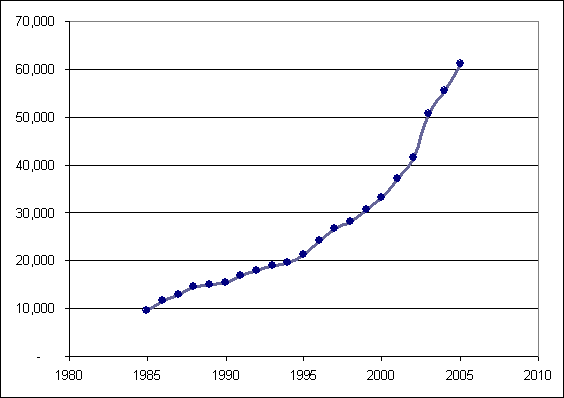By Mike Kmetz, Managing Director, UL IDES
More resins, more choices. How do you find the right one?
These are interesting times for the plastics industry. Increasing resin price, decreasing supply, pressure from off-shore, a troubled automotive sector – are just some of the factors that contribute to a very challenging landscape for injection molders.
Compounding a molder’s challenges are the plethora of resin grades available in today’s marketplace. One might surmise that with all the consolidation in this industry, the number of choices may have been reduced but this, in fact, is not at all the case. There are now more than 61,000 plastics out there – and the number is growing. Therefore, the question then becomes: How can a molder find the best possible material for the job while having the peace of mind that they have also found the lowest cost?
More resins now than ever – Why?
Looking back 20 years we see that the number of resins on the market has continued to grow. In a market that is continually becoming more commoditized, one would not expect the number of available products to expand; common sense would say that it should actually contract.

Source: Prospector Plastics Database
So, then, why do we see this path of continued growth? First, we are dealing now, more than ever before, with a global market. Twenty years ago there were few resin suppliers that exported to the U.S. and fewer yet from the Pacific Rim. Of the 500+ resin suppliers that provide the U.S. with resins, more than fifty are headquartered in Asia. And there are more all the time. Of course the challenge for the molder is to be able to identify these other potential sources.
Although there have not been any new significant generic families of materials in a few years, suppliers continue to hone their existing products to better meet the needs of emerging markets. For example, there are 887 grades of GE’s Lexan – each developed to satisfy a particular need. As plastics are pushed into more demanding applications, resin suppliers will respond with a grade slate to meet specific requirements.
What resins are molders searching for?
With the vast number of resins out there it is interesting to see what sorts of materials that molders are looking for. One could conclude from this that the preponderance of today’s applications are being produced with these material families. One might also conclude that other viable materials don’t hit the top twenty list because molders and OEMs are simply unaware that there might be another or an alternative material. It turns out that there are some excellent resources that can help in this regard.
Get a little help from your friends
Everyone knows about Google. But how many OEMs and Molders use it to find information on the materials they need? Take a simple test. Type Magnum 1040 into Google. Instantly you’ll see very relevant results that lead to an abundance of information for this material. It turns out that if you are very specific with your request, including the material type and grade, you’ll almost always get what you need.
The views, opinions and technical analyses presented here are those of the author or advertiser, and are not necessarily those of ULProspector.com or UL Solutions. The appearance of this content in the UL Prospector Knowledge Center does not constitute an endorsement by UL Solutions or its affiliates.
All content is subject to copyright and may not be reproduced without prior authorization from UL Solutions or the content author.
The content has been made available for informational and educational purposes only. While the editors of this site may verify the accuracy of its content from time to time, we assume no responsibility for errors made by the author, editorial staff or any other contributor.
UL Solutions does not make any representations or warranties with respect to the accuracy, applicability, fitness or completeness of the content. UL Solutions does not warrant the performance, effectiveness or applicability of sites listed or linked to in any content.


